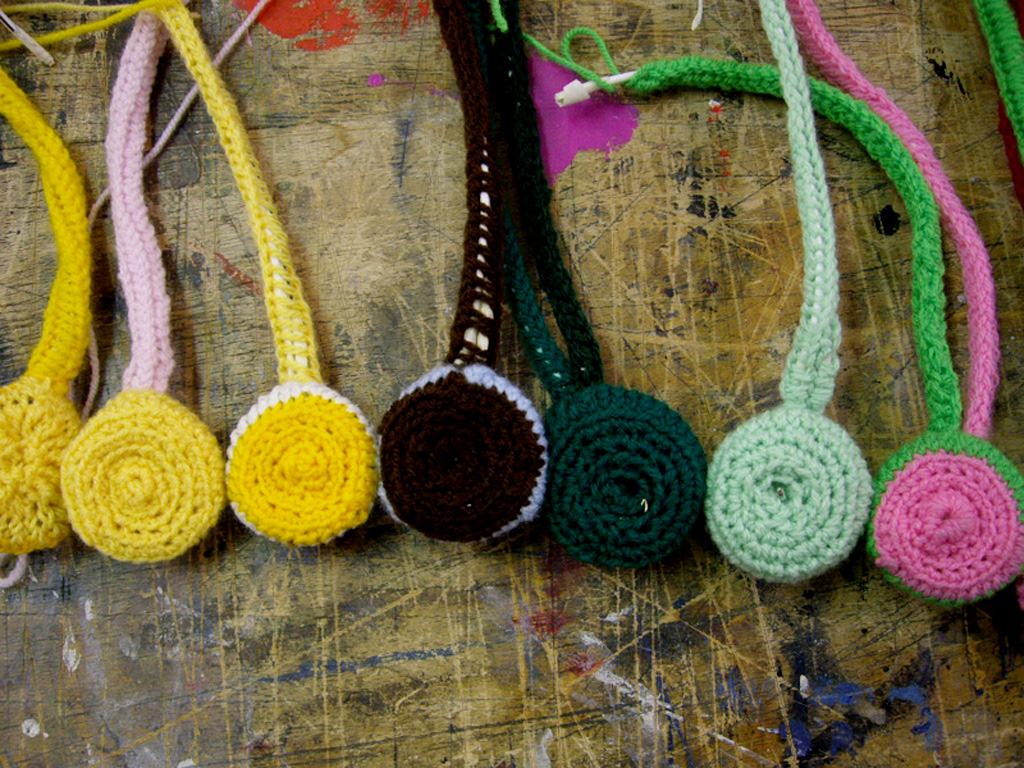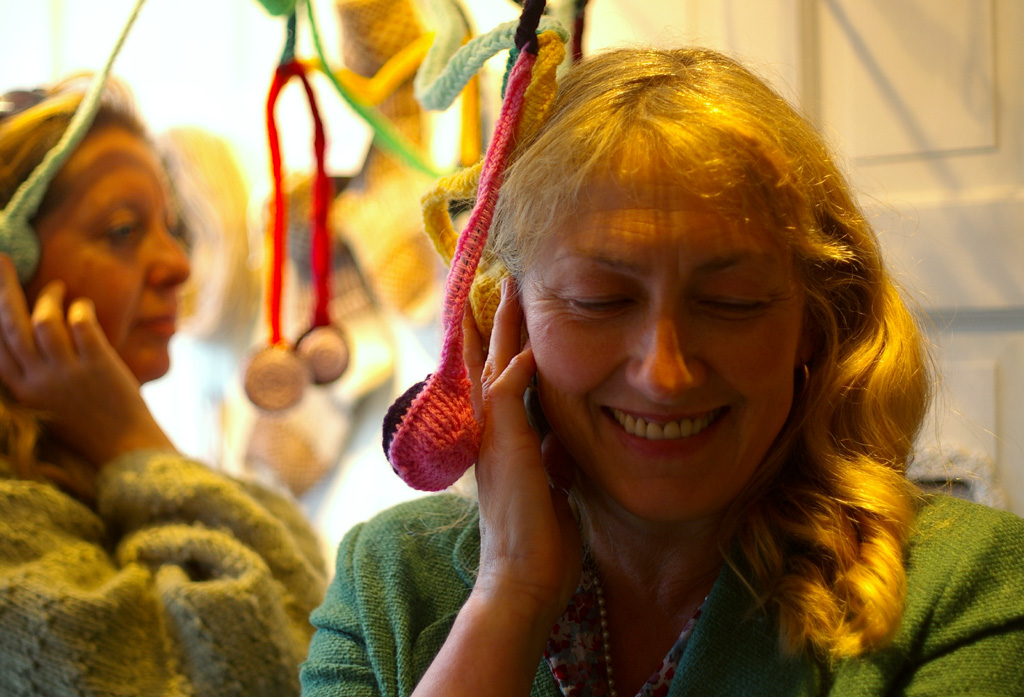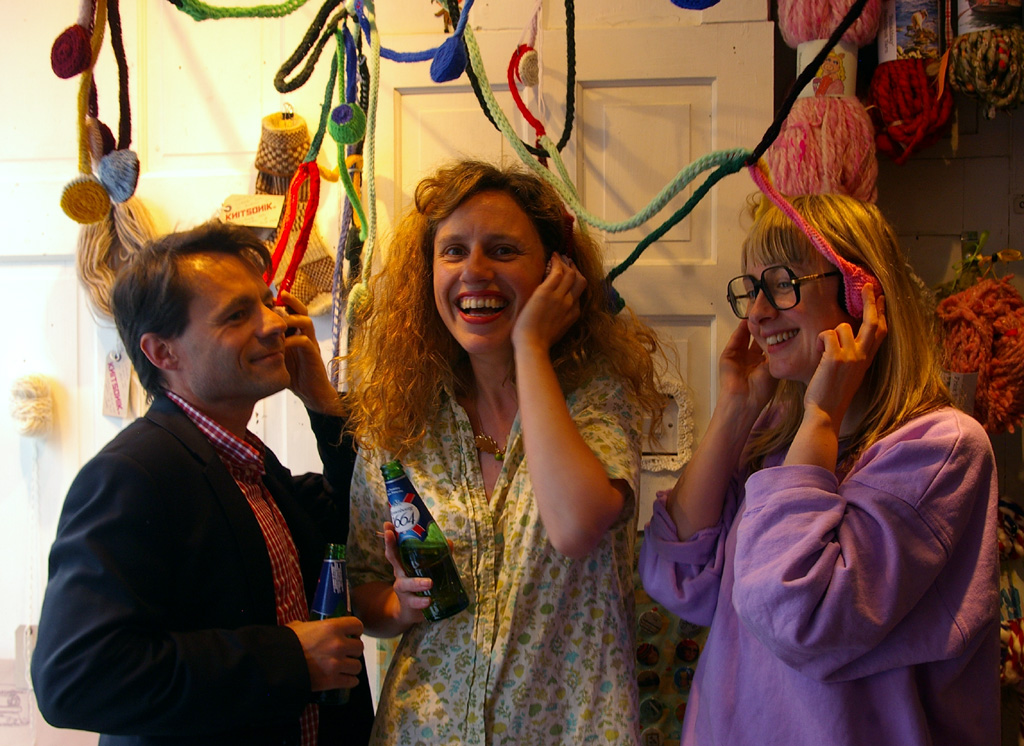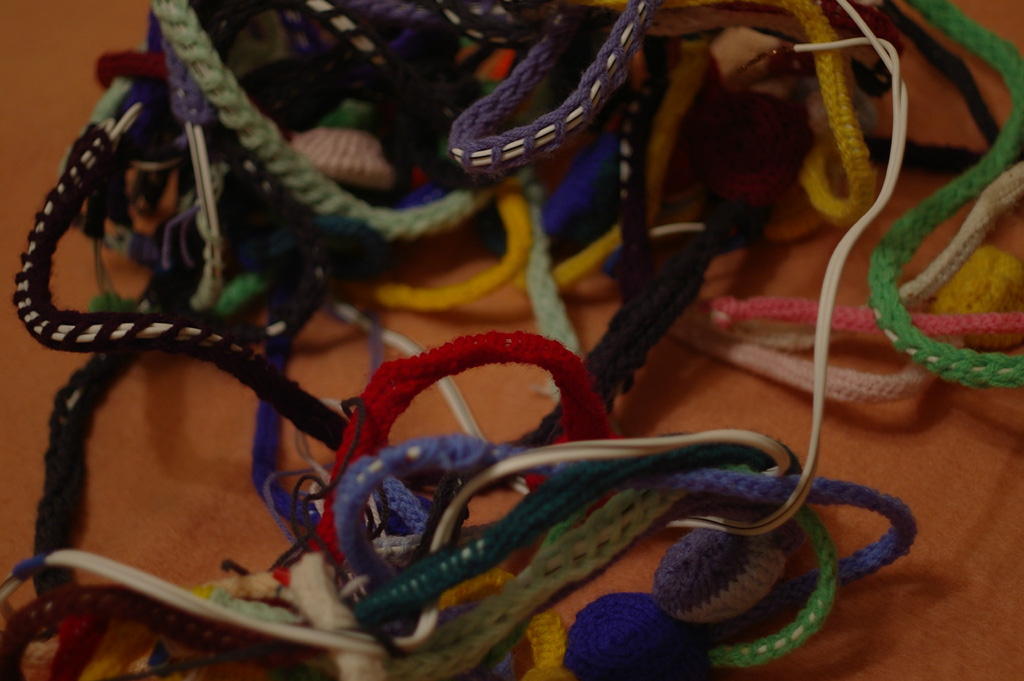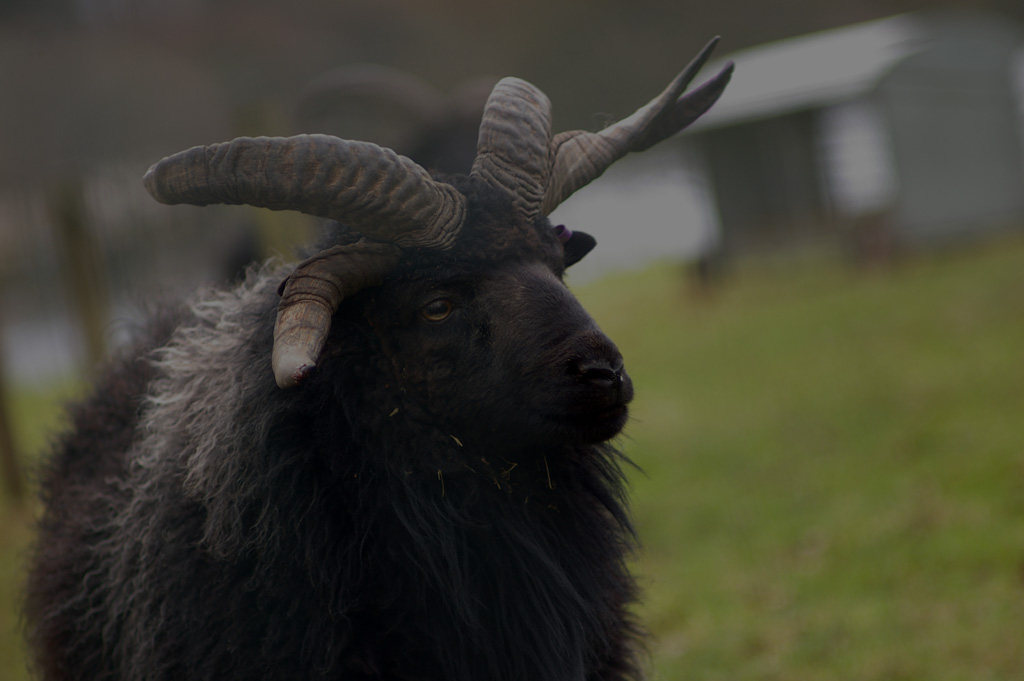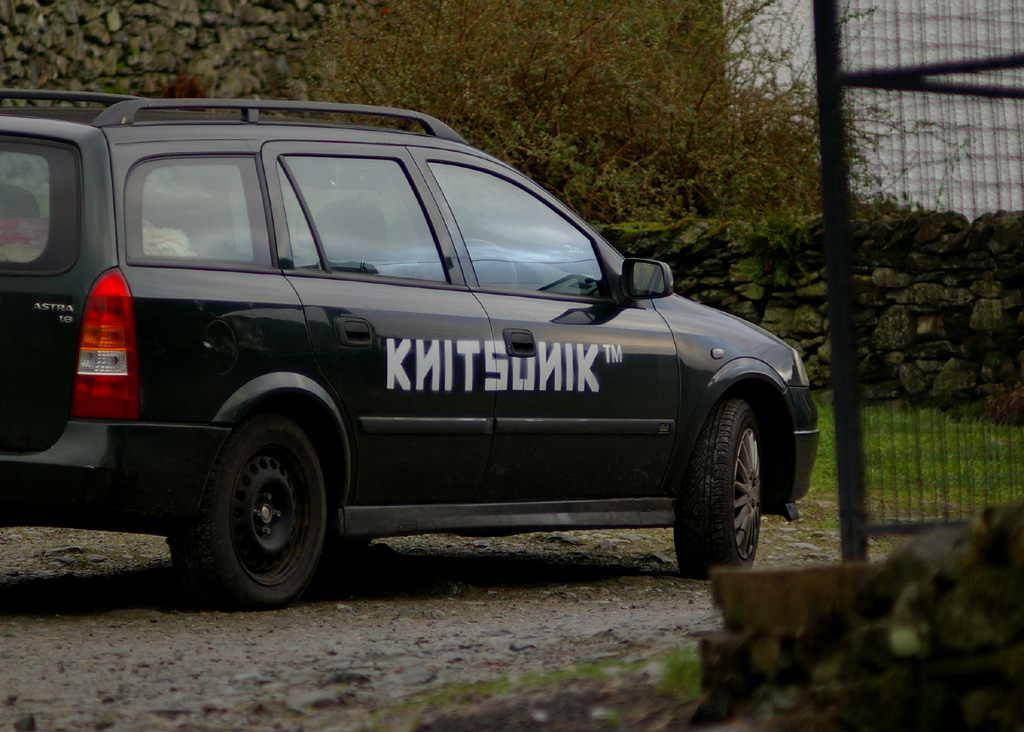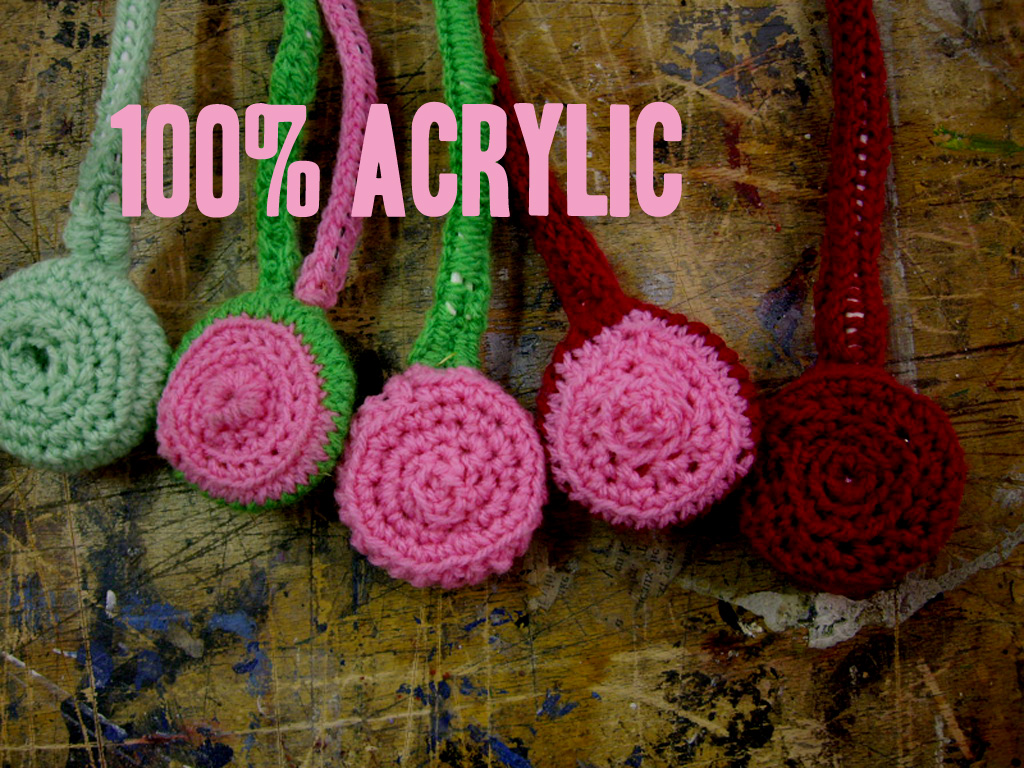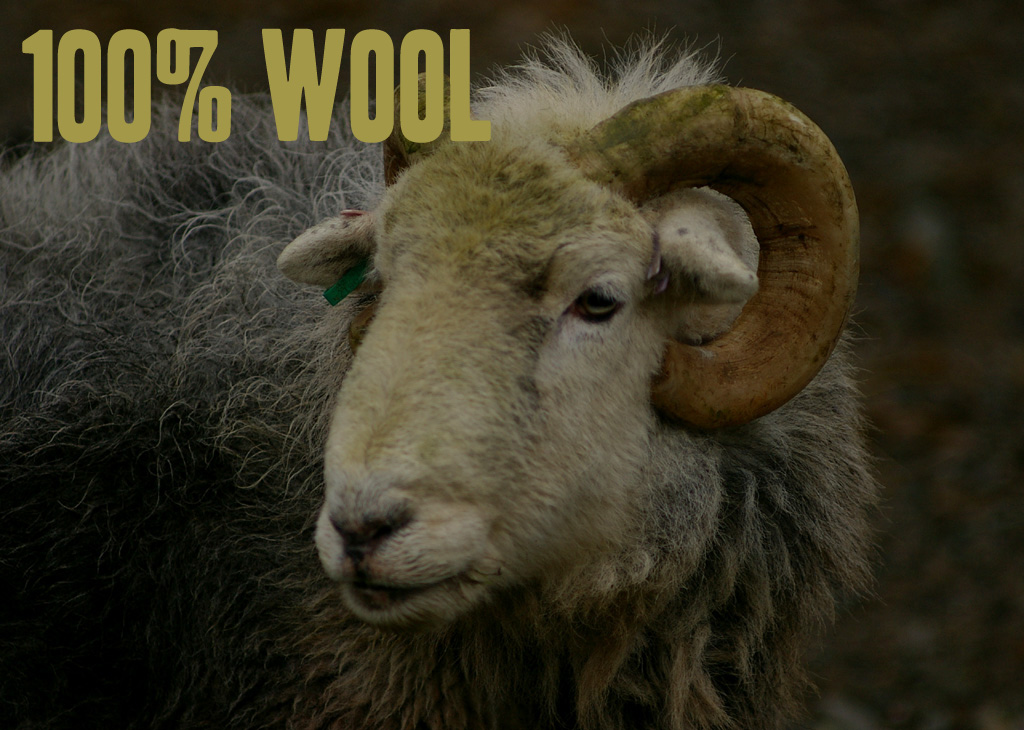I hope you won’t mind a personal post here from me, Felicity, one of the members of TEAM WOVEMBER! I wanted to explain a little bit why I chose “Closing the Gap” as the theme for this year’s month-long celebration of WOOL and why there will be a SONIK dimension to this years’ WOVEMBER festivities. I also wanted to share how all your contributions last WOVEMBER influenced and shaped my practice. A word of warning – this is a LONG post, so you might want to get yourself a CUPPA**!
Let us begin at the beginning, at the point when I began knitting.
In 2006, I made a piece called “Listening with Care”. It was a sound-system featuring 32 miniature speakers, covered in hand-knitting. The speakers were soldered into several circuits along big lengths of speaker wire, so that they could hang in space as a friendly tangle of knitting and sounds. The idea was that people could put the speakers close to their ears, and hear domestic sounds playing through them.
The project wasn’t a big success. The main problem was the weird relationship between the gaudy ACRYLIC yarns covering the speakers and the recordings playing through them, which sounded more like static than like home. In 2006 I knew nothing about WOOL; I still called “the yarn shop” “the wool shop”. Re: the sounds, well that’s another story.
“Listening with Care” was not the celebration of home in sounds + knitting that I had wanted to make.
I continued to experiment with The Knitted Speakers. I showed them at Prick Your Finger during my residency there where they played a podcast I had created in the shop, about the soundworlds of knitters.
I still liked that people could hold them up to their ears, and listen to the sounds they played in little social groups.
However, I was making more and more sound work about knitting, and knitting was becoming all about WOOL for me! It started to make no sense at all for The Knitted Speakers to be covered in ACRYLIC. I wanted to speak about WOOL with sound, and how can you do that when your speaker system’s covered in ACRYLIC?
Researching last year’s WOVEMBER blog-posts and processing all your entries to the WOVEMBER photo competition with Kate deepened my appreciation for the expressive and material properties of WOOL.
About mid-way through WOVEMBER I was contacted about an exhibition in Cumbria. The title of the show was to be “Wonder of Wool”, and the folks organising it wanted to include my Knitted Speakers in the show.
This was my response:
The KNITSONIK vision has grown; I have moved on in my practice and no longer wish to work with acrylic yarns. I am unhappy about showing the knitted speakers anywhere unless they are covered in 100% WOOL and unless the sounds playing through the speakers bear some tangible relationship with the materials in which they are covered.
When Trevor Pitt presented my case, Rheged and a representative of the Wool Marketing Board appreciated the sentiment enough to fund an intense period of recording, editing and re-making, so that I could show The Knitted Speakers at WOW, covered in 100% WOOL. I was helped out tremendously by Rachael and her family, by Caecilia and Pam of The Wool Clip, by Amy, and another lady in The Wool Clip, (who helped me with some last minute emergency knitting!) and by John, at Rheged, who arranged interviews with many local shepherds.
I stripped off all the acrylic coverings.
Then I met shepherds and their sheep, made field-recordings, and re-fashioned The Knitted Speakers with 100% WOOL coverings. I recorded stories which made me laugh and cry, including everything from the funny personalities of sheep through to the devastating losses that farmers endured during the foot & mouth crises. I learnt that the wool cheque used to pay a year’s rent on a farm, but now amounts to pennies, and I heard tell of fleeces being burnt because driving them to a depot for collection or paying to store them often costs more than the farmer is paid for them.
These are some of the stories of WOOL. I recorded them because I think they need to be heard.
All the time I was listening to people talking, I was wondering to myself “I know so many people who love WOOL; how has this GAP emerged between the people who produce WOOL and the people who want to buy it?”
In some cases the gap is closing. When I visited Pam Hall’s farm I could literally buy a skein of yarn in earshot of the sheep on whose backs it grew! Also, this speaker uses a yarn that Laura has spun in Halifax…
…and the wool for that yarn comes mostly from local flocks of Hebridean sheep, like this ram, of David & Diana Kinsman’s flock.
The moments where place, WOOL, landscape and shepherd combined into one thing lay at the heart of the re-making of The Knitted Speakers. During such moments I imagined a listener at the end, cupping a speaker to their ear, and realising that the sheep they could hear baa-ing and shuffling around were the very source of the wool in their hand.
“Hûrd* – A KNITSONIK™ PRODUKTION” was the celebration of wool + sounds that I wanted to make.
At some point BBC Cumbria got wind of a sound artist driving around the Lake District, recording the sounds of sheep.
They requested an interview, and I thought about the simplest way that I could explain my activities. I opted to say “with this project I am trying to close the gap between the producers and the consumers of wool”, because I realised this was the truth. It was a sentiment born here last year during WOVEMBER, when I was struck by how much more valuable WOOL seems once we understand fully the processes by which it becomes clothing. It is through reading the blogs of farmers and through meeting shepherds that I have gained my own appreciation for what WOOL is, and I want to record as many stories of WOOL as I can, and pass them on. I can’t share the whole feeling of watching Herdwicks grazing on the fell, but I can record the wind that blows there, and I can put the resultant textile right next to that sound.
[soundcloud url=”http://api.soundcloud.com/tracks/64528038″ iframe=”true” /]
My Knitted Speakers are a miniscule gesture in the whole world of projects which explore the provenance and context of WOOL. As Lesley Prior of Devon Fine Fibres once put it, I am just “a cog in the world of wool“. I am sad that the actual electrical components inside The Knitted Speakers cannot be sourced more ethically – that’s another battle. But as long as there are electronic goods, they might at least be clad in WOOL!
I hope you understand why I decided to spread the idea of Closing The Gap across this year’s WOVEMBER. As long as there is a Gap, and the trail from source to shoulders is obscured, it will still be possible for clothes which are NOT WOOL to be mis-described. Signing the WOVEMBER petition is part of the political action that we can take to combat misleading product descriptions, but another crucial part is sharing the stories of WOOL, so that we can definitely tell this…
…apart from this:
I felt really honoured when Bridget Kelly from The Wool Marketing Board said that The Knitted Speakers seemed to her to be “like listening to WOOL”. That sums up the my hopes for the piece really well. To extend the idea of “listening to WOOL”, WOVEMBER 2012 will include SONIK treats.
For starters, you can listen to the soundscape I made for The Knitted Speakers at Rheged here, and you can also download a baa-tone for your phone from here as an mp3. It contains baas from Joel and Julika’s flock in Estonia; baas from Jane and Brian Knowles’s Rough Fell flock in Cumbria; and baas from Amy Black’s Rough Fell Flock in Cumbria. The Rough Fell sheep are bigger than Joel and Julika’s smaller sheep, and they have deeper baas! The differences in their respective fleeces shall be the subject of future posts.
*Hûrd is the pronunciation spelling of both “heard” and “herd”.
**The incredibly sheepy tea set includes Kate Davies Designs 100% WOOL Sheep Carousel Tea Cosy, a wonderful tea towel which I think came from the Shetland Sheep Society, and a Herdy mug.

